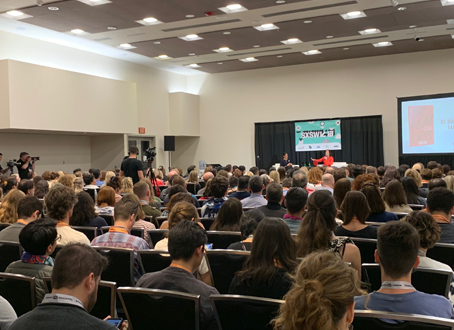Over the last four years, the Case Foundation has been deeply committed to catalyzing the Impact Investing movement. Alongside partners, we seek to inspire, educate, and activate investors around the potential to put private capital to work to solve some of our most complex challenges. Today we are excited to see a growing and diverse set of actors engaged in Impact Investing, led in part by innovative first-movers. These include high net-worth individuals and institutions who have begun to seek financial and social returns by aligning their investment portfolio with their values.
As part of our movement building efforts, we’ve learned that sharing stories and insights from those who have transitioned to impact investing can be valuable to those who aren’t as far down the path. In 2016, we were fortunate to partner with Omidyar Network and The Giving Pledge to take a closer look at the Rockefeller Brothers Fund’s journey into impact investing, in hopes that it can serve as inspiration and guidance for others.
As part of that work, Case Foundation’s CEO Jean Case led a webinar with Justin Rockefeller, Trustee of the Rockefeller Brothers Fund (RBF) and Co-Founder of The ImPact and Jameela Pedicini, Director of Perella Weinberg Partners (PWP). Through this conversation, Jean explored the decisions made at RBF to ensure the portfolio was set on a clear path toward market returns, while choosing investments that more closely aligned with their values.
As organizations rethink how to blend profit and purpose, we encourage you to watch the webinar to learn from RBF’s journey. Here, are a few key themes that came to light:
1. Define your impact
As Jean mentions at the start of the conversation, “impact investing means different things to different people.” At the Case Foundation, we believe that a broader interpretation allows more people to gather around the impact investing table. But that does not relax our expectations around what it means to generate both social or financial returns.
Instead, our definition of impact investing focuses on three necessary conditions to help narrow in on just what each of us means by “impact”:
- Intentionality – are objectives clearly articulated across social and financial goals?
- Measurement – will the organization track performance across both objectives?
- Transparency – does the organization share – or intend to share – insights into their process and performance (as much as is able) to help create more examples around what works and what doesn’t?
2. Know what you own; then develop an investment process that leverages your strengths
The RBF’s programmatic approach spans several sectors, including democratic governance, sustainable development and peacebuilding. The grantmaking arm of the RBF has developed a thoughtful approach to promoting sustainable development, particularly around the environment and climate. When the time came to evaluate how the entire investment portfolio – and ultimately the endowment – could reflect the principles and values of the RBF, they looked to their strengths.
“25% of our program dollars go to fighting climate change,” Justin says, “we thought this was so fundamental to the work we do, that we should start there.”
By leveraging a diverse set of tactics, including divestment, an ESG lens (integrating Environmental, Social, and Governance factors), active ownership, and investing with Impact managers, RBF and PWP set out on the task together. With these tools in mind, they looked to activate RBF’s vision on what a thoughtful climate-focused strategy might look like.
We’ve seen time and again Foundation’s struggle between focusing on grantmaking vs. using their investment levers, but as Justin points out, “every foundation has different tools on its tool belt – the endowment is just one of those tools.”
3. Commit to a measurement framework
Once the mission was clear and the rigor made explicit, activating the strategy was next. The RBF and PWP started by shifting the Investment Policy Statement (IPS), transforming the objective of the portfolio from “maximizing returns” to “continue in perpetuity with generational neutrality.”
Formalizing this mission– and bringing stakeholders like the Board, senior leadership, and the Investment Committee along in the process – is a critical step to ensure that impact is sustainably interwoven into the way investments are identified and selected.
Jameela Pedicini also suggests that practices around consistent measurement can lead to broader behavior change. “Regular impact reporting,” for example, “will help us assess long term tends.”
By drawing on the journeys of organizations like the RBF, we will develop a stronger narrative around what impact investing can look like across actors. We hope that sharing these insights will provide high net-worth individuals and families, foundations, corporations, and others concrete examples to follow. We will continue to look for opportunities to showcase case studies and lessons from various organization, as part of our broader efforts to take impact investing to the next level.
We invite you to watch the full conversation here. You can also learn more about the RBF’s journey through The ImPact’s recently launched case study; “Rockefeller Brothers Fund: Impact Investing Case.”




